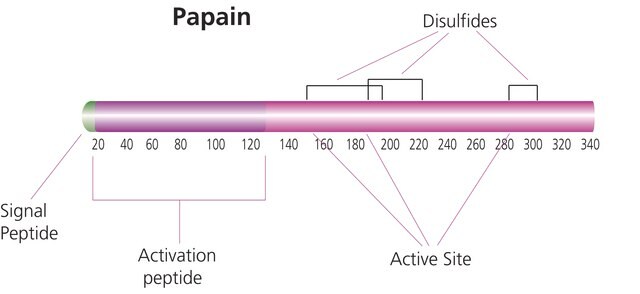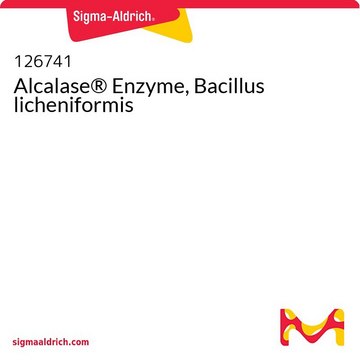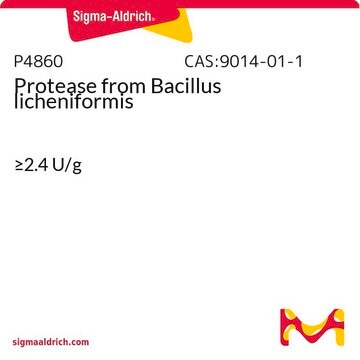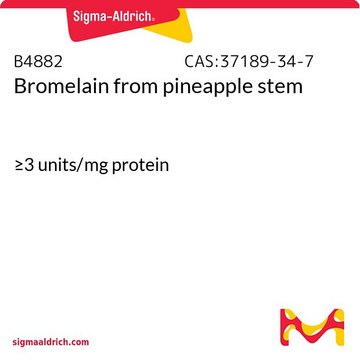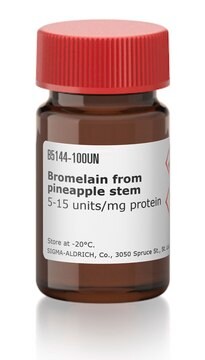76216
Papain from Carica papaya
solution, light brown, ≥10 U/mg protein (~25 mg/ml)
About This Item
Produits recommandés
Source biologique
papaya
Niveau de qualité
Forme
solution
Activité spécifique
≥10 U/mg protein (~25 mg/ml)
Poids mol.
Mr ~23000
Technique(s)
cell culture | mammalian: suitable
single cell analysis: suitable
Couleur
light brown
Température de stockage
2-8°C
Vous recherchez des produits similaires ? Visite Guide de comparaison des produits
Description générale
Application
- in the enzymatic dissociation of rat cortices to extract astrocytes for cell culture
- to study its effects on Alpaca seminal plasma viscosity and sperm function
- to study its effects on the yield and cryo-survival of Rhinoceros spermatozoa
Actions biochimiques/physiologiques
Définition de l'unité
Mention d'avertissement
Danger
Mentions de danger
Conseils de prudence
Classification des risques
Eye Irrit. 2 - Resp. Sens. 1 - Skin Irrit. 2 - STOT SE 3
Organes cibles
Respiratory system
Code de la classe de stockage
11 - Combustible Solids
Classe de danger pour l'eau (WGK)
WGK 1
Point d'éclair (°F)
Not applicable
Point d'éclair (°C)
Not applicable
Équipement de protection individuelle
dust mask type N95 (US), Eyeshields, Faceshields, Gloves
Faites votre choix parmi les versions les plus récentes :
Déjà en possession de ce produit ?
Retrouvez la documentation relative aux produits que vous avez récemment achetés dans la Bibliothèque de documents.
Les clients ont également consulté
Notre équipe de scientifiques dispose d'une expérience dans tous les secteurs de la recherche, notamment en sciences de la vie, science des matériaux, synthèse chimique, chromatographie, analyse et dans de nombreux autres domaines..
Contacter notre Service technique
